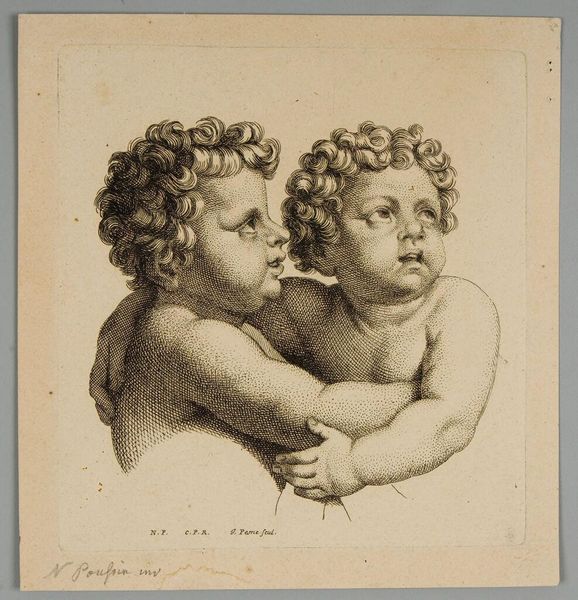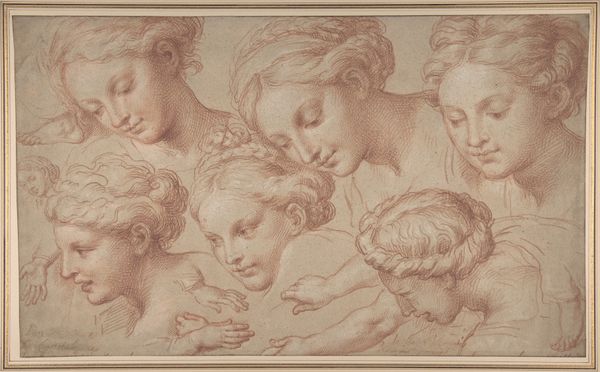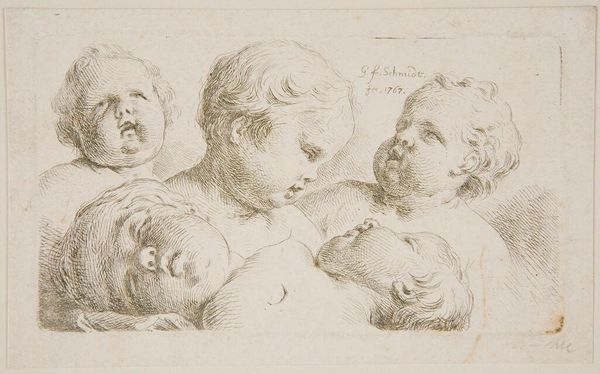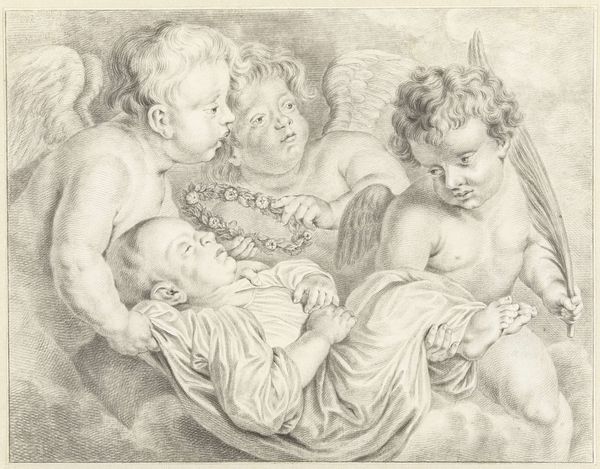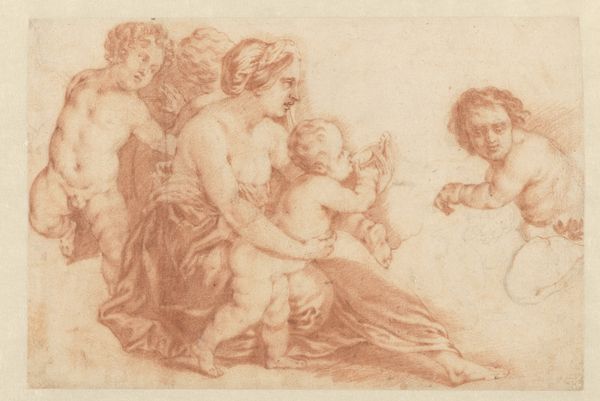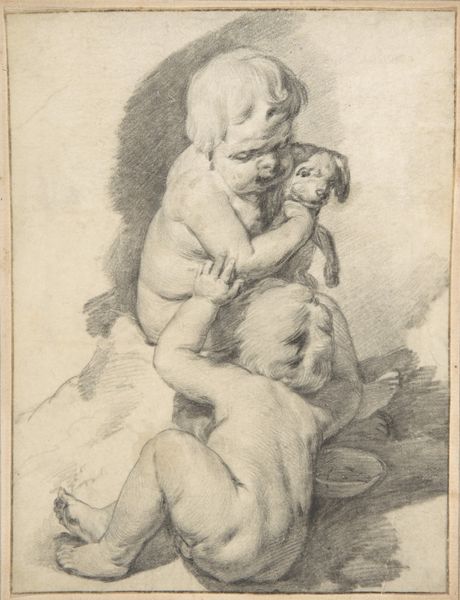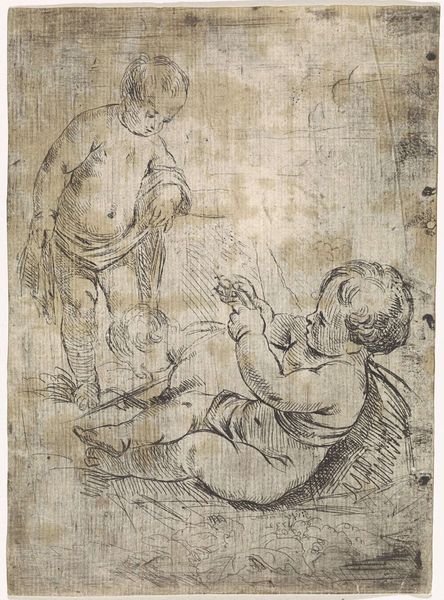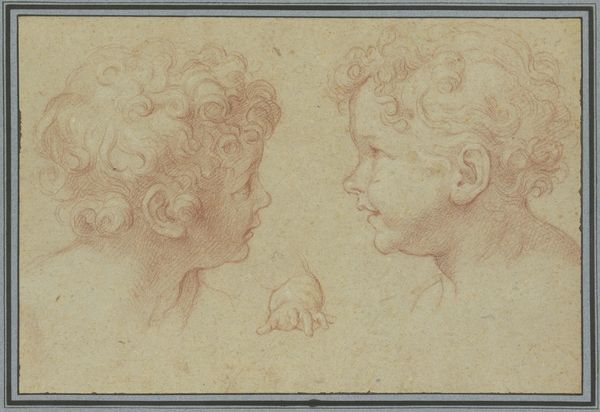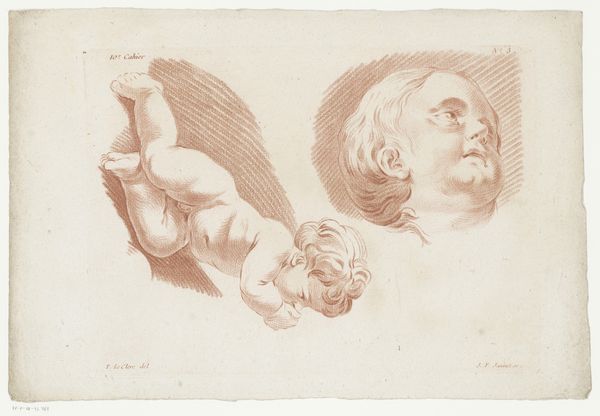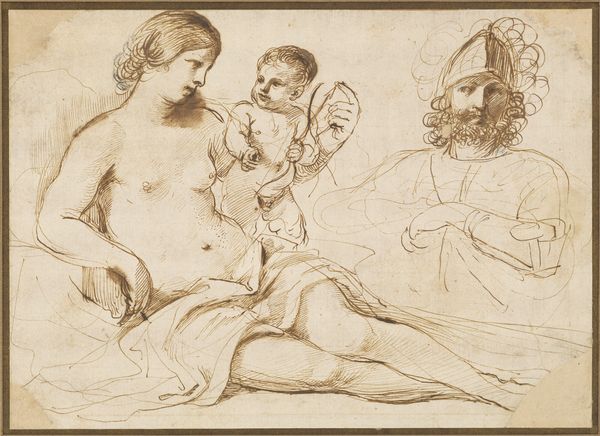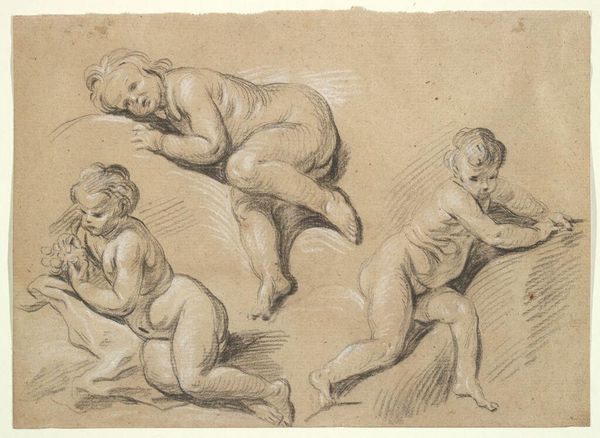
drawing, charcoal
#
portrait
#
drawing
#
head
#
charcoal drawing
#
figuration
#
sketch
#
portrait drawing
#
charcoal
#
rococo
#
angel
Copyright: Public domain
Jean-Honoré Fragonard made this drawing, Two Heads Danger, with black chalk and stumping on paper. In eighteenth-century France, artists like Fragonard were employed by the aristocracy, producing idealized images of leisure and pleasure. Here, cherubic figures, rendered with delicate strokes, embody the Rococo style's celebration of lightness, grace, and intimacy. The title suggests a playful awareness of the potentially mischievous nature of these figures, a common theme in Rococo art, which often depicted scenes of dalliance and romance. We can consider the art academies, which dictated aesthetic standards and promoted classical ideals, as institutions that are relevant here. However, Fragonard and his contemporaries offered an alternative vision, one that catered to the tastes of a wealthy elite seeking diversion and amusement. Historians use period documents, letters, and critical reviews to understand how these images functioned within the social fabric of their time. This helps us understand the artwork's social context.
Comments
No comments
Be the first to comment and join the conversation on the ultimate creative platform.
